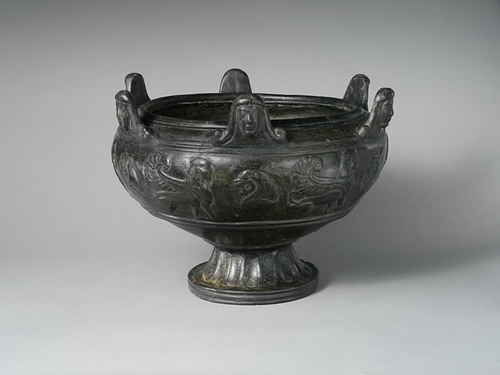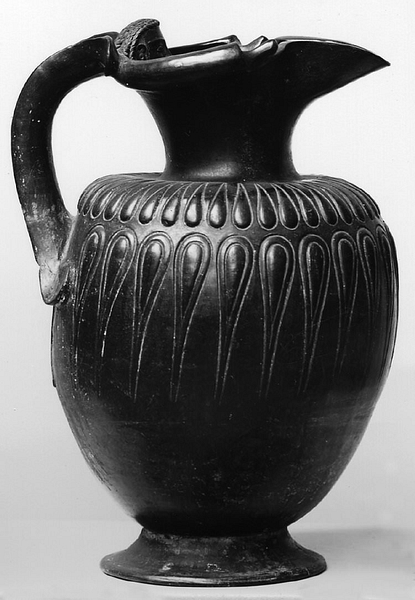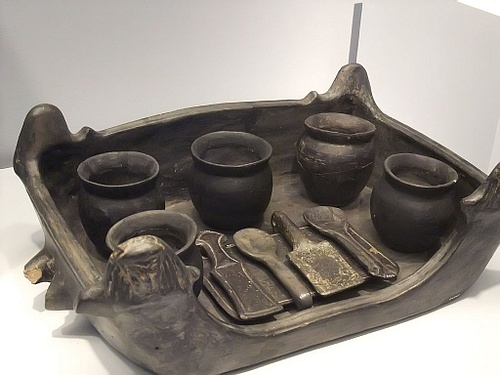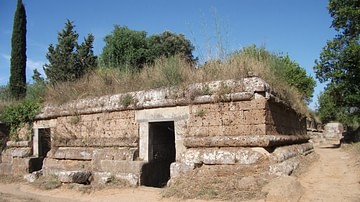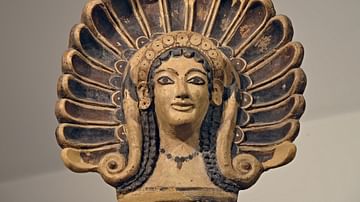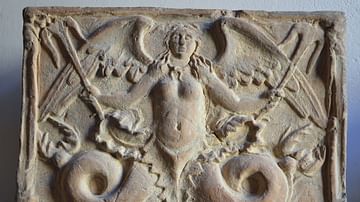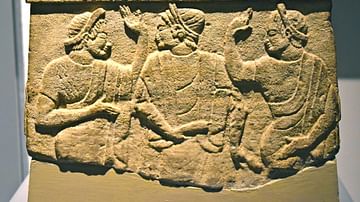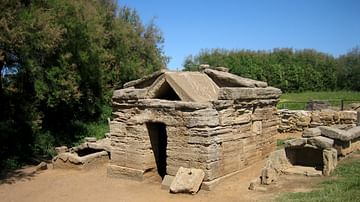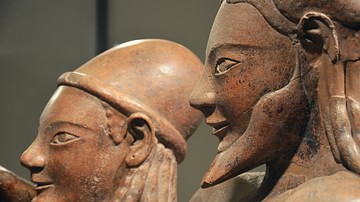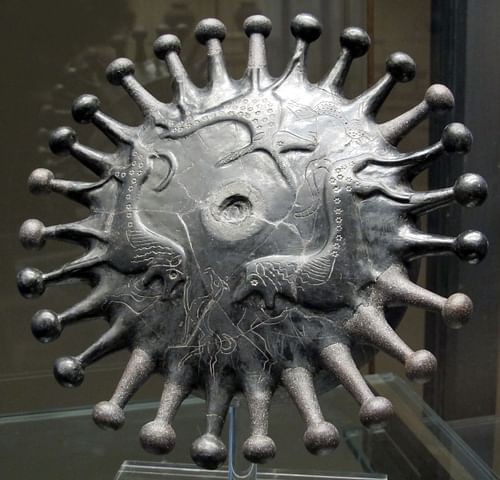
Bucchero wares are a shiny dark grey to black pottery produced by the Etruscans of central Italy from the 7th to 4th century BCE. Used for everyday purposes and as funerary and votive objects, bucchero incorporates many forms from simple jugs to highly decorative pieces of sculpture.
Evolution
In the 8th century BCE, the Etruscans were already producing a rather crude pottery known as impasto which was made of clay containing impurities of mica or stone. Although potters managed to improve the quality of impasto through long practice, it was replaced as the daily pottery of choice by an intermediary type known as buccheroid impasto and then bucchero proper sometime in the early 7th century BCE. Turned on the wheel, this new type had a more even firing and, using a process of reducing oxygen in the kiln, gave a consistent and distinctive glossy dark grey to black finish (the clay's red ferric oxide being turned into black ferrous oxide).
The earliest known examples come from Cerveteri (aka Cisra or Caera) and date to c. 675 BCE. Bucchero was produced in many Etruscan centres (notably Cerveteri, Tarquinia, Veii, and Vulci) and has become a hallmark of Etruscan presence at archaeological sites in central and northern Italy. The Etruscans were Mediterranean-wide traders, too, and bucchero was thus exported beyond Italy to places afar afield as Iberia and the Levant.
Curiously, bucchero wares display the reverse trend of refinement seen in many other pottery type evolutions. The early period wares are finer with much thinner walls and more carefully made; these are known as sottile (fine). There is then an intermediary stage known as transizionale (transitional) before a final phase when wares are described as pesante (heavy). Finer wares are generally associated with the southern Etruscans cities and the heavier type in the northern. Chiusi became a particularly noted centre for pesante wares, most of them being funerary objects. The dates for each style are usually cited as follows:
- Fine bucchero: 675-626 BCE
- Transitional bucchero: 625-575 BCE
- Heavy bucchero: 575-480 BCE
Eventually, by the early 5th century BCE, bucchero was replaced by finer Etruscan pottery such as black and red-glazed wares, and by imported Greek vessels which were specifically made in Greece to suit Etruscan tastes or made by local and immigrant potters in imitation of popular Greek styles.
Forms
Etruscan potters were not without ambition and besides making vessels for ordinary daily use such as bowls, single and two-handled cups, chalices, and jugs, they also made more elaborate pieces with the addition of three-dimensional figures of both humans (especially female heads) and animals. Greek influence is seen in such choices as the ubiquitous amphora and two-handle cup or kantharos. Other forms include votive offerings and wares placed in tombs to accompany the dead into the next life. A common example of the latter are the plain service trays (known as focolare) complete with bowls, plates, cups, and utensils. Another form of votive offerings was figurines. These are closer to sculpture than pure pottery, as are the anthropomorphic vessels such as the cockerel from Viterbo which has a small lid and, if its inscription of the Etruscan alphabet is anything to go by, functioned as an ink pot.
The forms of bucchero were also influenced by contemporary metalwork, especially bronze goods, and the pottery was probably esteemed for its shiny finish so like burnished metal. Indeed, this imitation sometimes went so far as to manifest itself in some bucchero vases being covered in gold or silver leaf, sometimes also a thin layer of tin. Decorations of ridges and applied sculpted pieces can complete the illusion of embossed metalwork.
Decoration
Many bucchero wares were left plain, but decoration, when it occurs, can take the form of simple lines, spirals, and dotted fans incised onto the surface. Red ochre was sometimes painted in these incisions, but very few examples survive with their paint intact. Another decoration is the application of geometric shapes arranged symmetrically around the vessel, giving the illusion the vessel has been pressed from the inside. Many decorative motifs and scenes were influenced, as with other branches of Etruscan art, by Ionian and Near Eastern art. Greek decorated pottery from Attica and Corinth was especially popular in Etruria and incised scenes from Greek mythology are a popular choice for bucchero artists. Patterns and scenes could be applied to the pot before firing using a stamp, either fixed or a roller.
